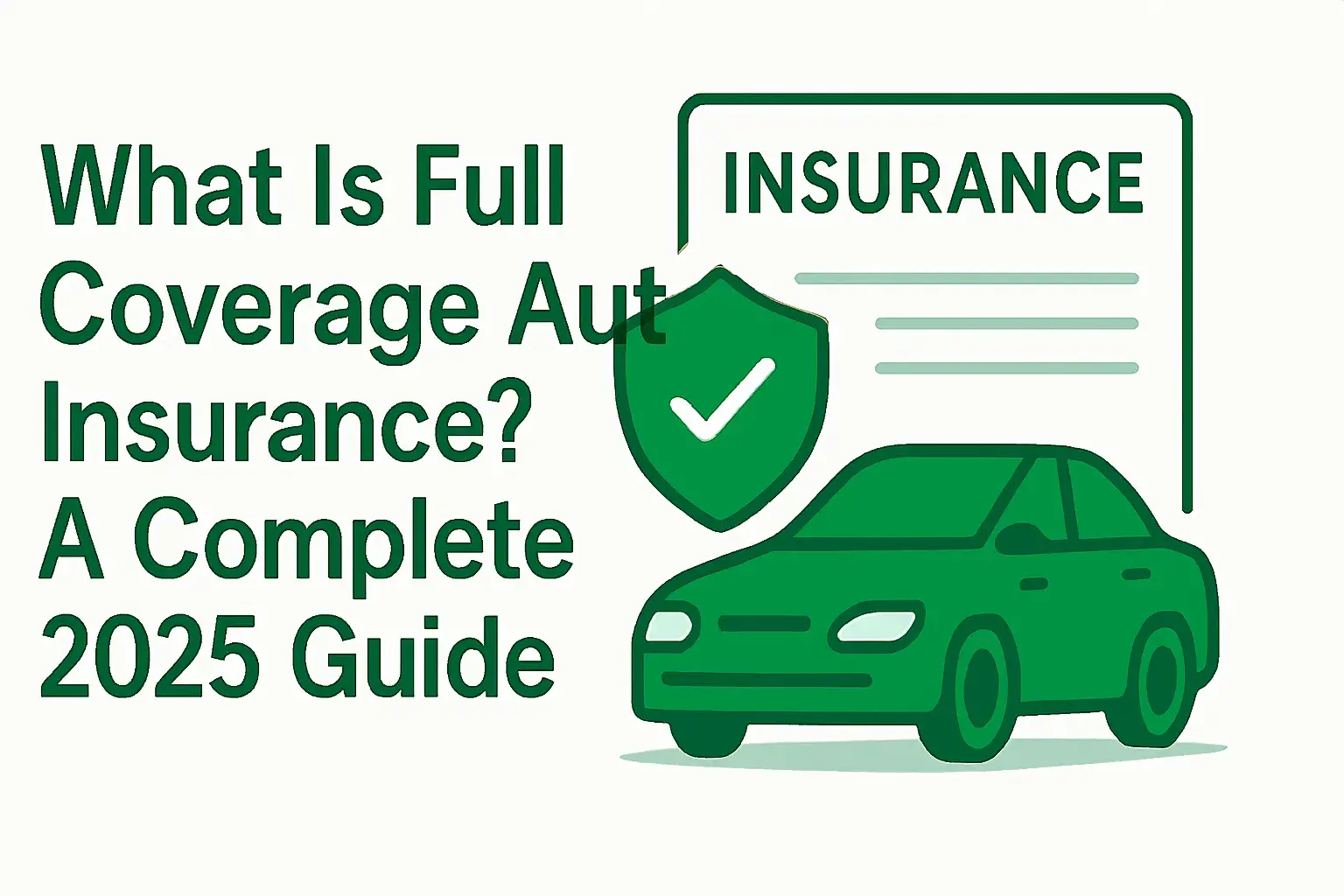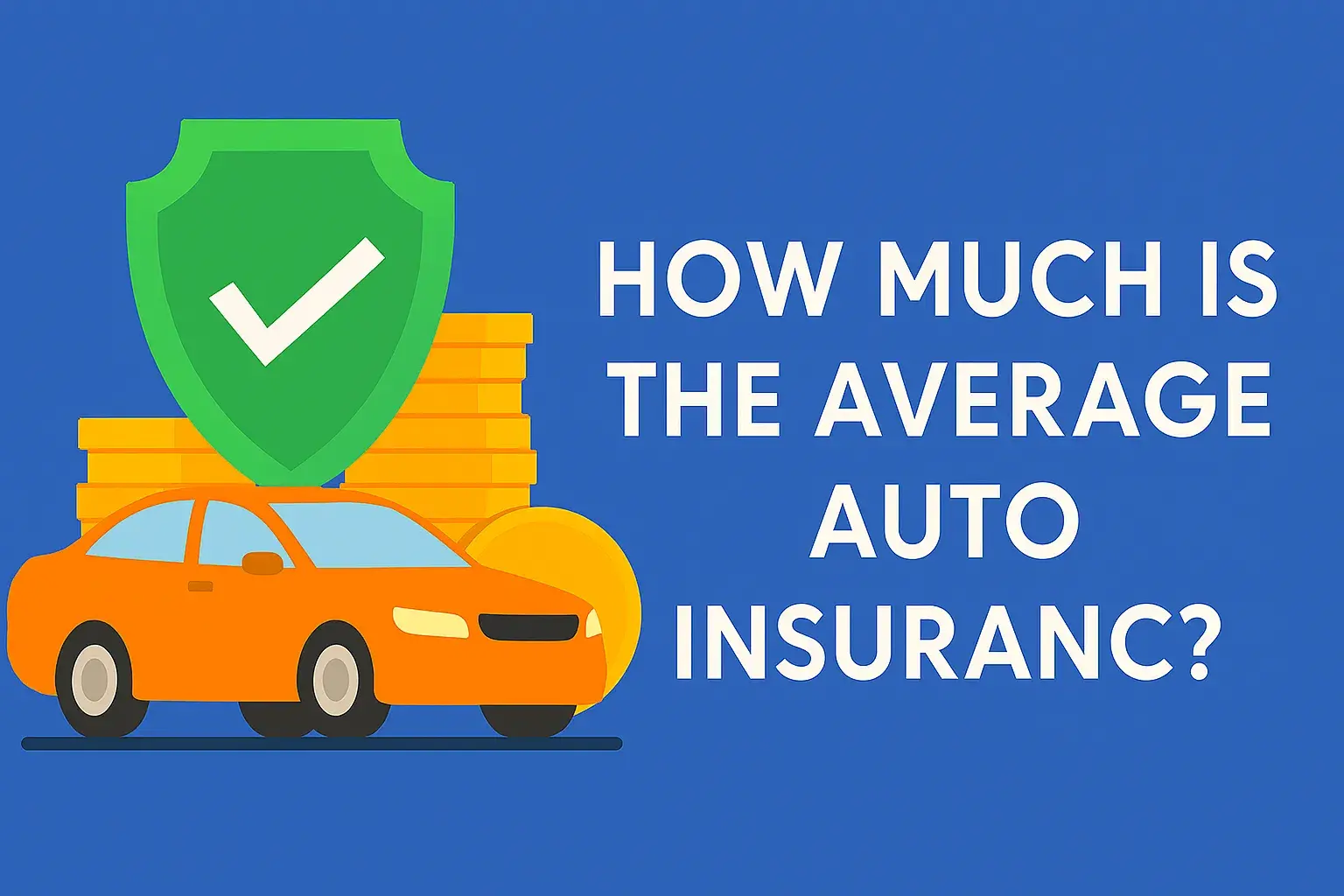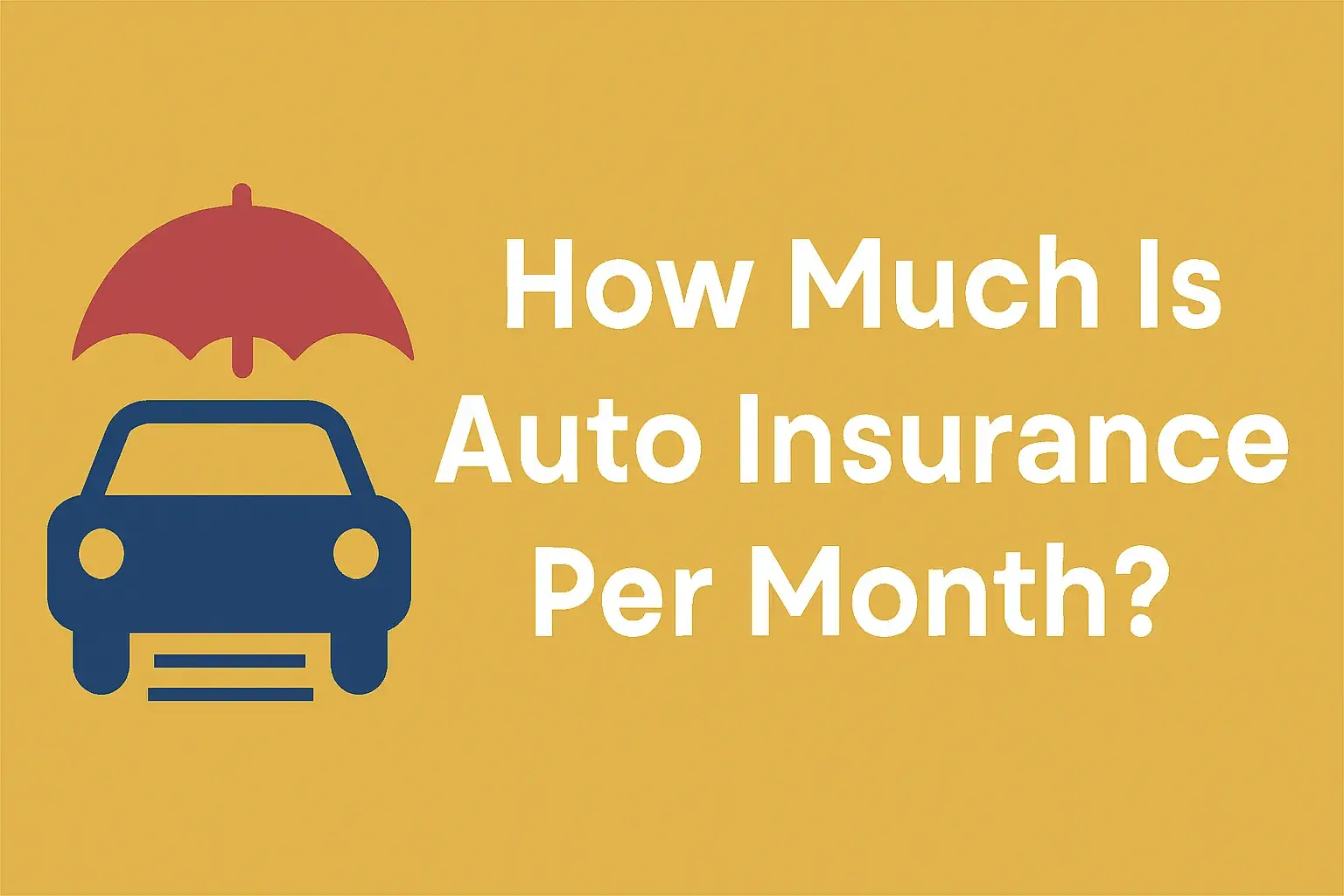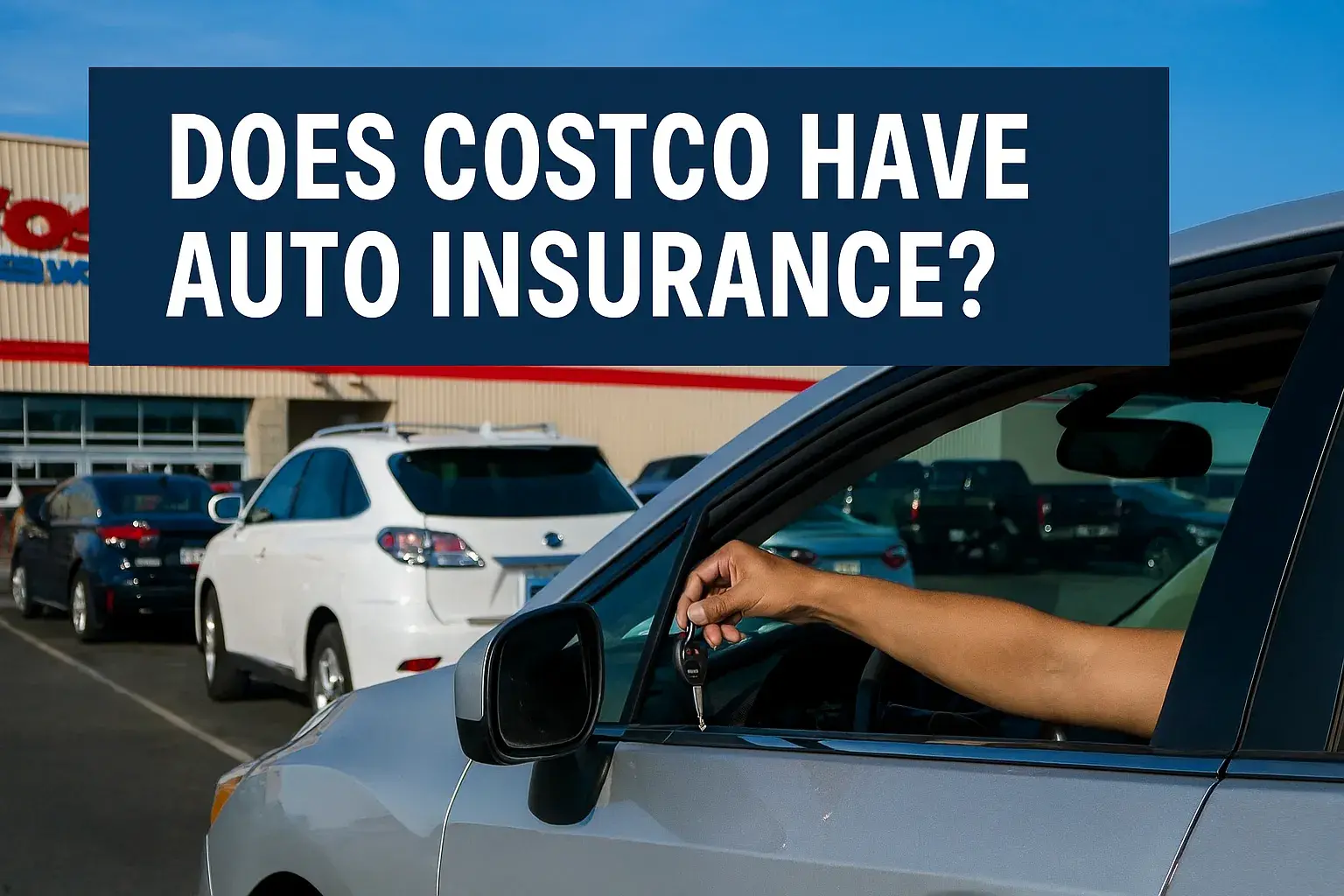11
Sep

Introduction
You’ve just driven your new car off the dealership lot, the smell of fresh interior still in the air. Or perhaps you’ve just signed the final papers to finance your dream vehicle. In either scenario, the salesperson or your lender has almost certainly said those two magic words: “You’ll need full coverage auto insurance.”
But what does that actually mean? If you’re picturing an impenetrable shield that pays for every single scratch, fender bender, and oil change, it’s time for a reality check. The term "full coverage" is one of the most common and most misunderstood phrases in the entire insurance industry.
In this definitive guide, we’ll demystify full coverage car insurance, breaking down exactly what it includes, what it doesn’t, who really needs it, and how to get the best policy without overpaying. Consider this your one-stop resource for making informed, confident decisions about protecting your vehicle and your financial future.
What Exactly is Full Coverage Auto Insurance? Myth vs. Reality
Let’s start with the most critical point: “Full coverage” is not an official insurance term. You won’t find a specific policy called “Full Coverage” on your insurer’s website or in your policy documents. Instead, it’s a convenient shorthand used by lenders, agents, and consumers to describe a combination of coverages that provide more extensive protection than the legal minimum.
The Myth: Full coverage means everything is covered, no questions asked.
The Reality: It’s a package of core coverages that protect you from a wide array of common risks, but it has exclusions, limitations, and deductibles.
At its core, a full coverage auto insurance policy typically bundles three main types of coverage:
-
Liability Insurance (often required by law)
-
Collision Coverage (for accidents)
-
Comprehensive Coverage (for non-collision events)
Most experts also include Uninsured/Underinsured Motorist (UM/UIM) Coverage and Medical Payments (MedPay) or Personal Injury Protection (PIP) in a robust full coverage definition.
What Does a Full Coverage Auto Insurance Policy Include? (A Detailed Breakdown)
A true full coverage policy is built in layers. Understanding each component is key to knowing what you’re paying for.
1. Liability Insurance: Your Legal Foundation
This is the absolute baseline of any auto policy and is required by law in almost every state. Liability coverage doesn’t pay for your own damages; it pays for the damage you cause to others. It’s typically expressed as three numbers (e.g., 100/300/50).
-
Bodily Injury Liability (BI) per person / per accident: Covers medical expenses, lost wages, and pain and suffering for people injured in an accident you cause.
-
Property Damage Liability (PD): Covers the cost of repairing or replacing another person’s property (e.g., their car, fence, or building) that you damage.
2. Collision Coverage: Protecting Your Own Vehicle
This is often the most expensive part of a full coverage policy. Collision insurance pays for damage to your own car resulting from a collision with another vehicle or object (like a guardrail, tree, or pothole), regardless of who is at fault. If your car is financed or leased, the lender will require this to protect their financial interest in the asset.
3. Comprehensive Coverage: The "Everything Else" Protector
Comprehensive auto insurance covers damage to your vehicle caused by events other than a collision. Think of it as protection from life’s unpredictable surprises. Common comprehensive claims include:
-
Theft of your vehicle or its parts
-
Vandalism and malicious mischief
-
Fire, hail, flood, falling objects, and other natural disasters
-
Collisions with animals (e.g., hitting a deer)
-
Glass damage (e.g., a cracked windshield)
Like collision coverage, comprehensive is almost always mandatory for leased or financed vehicles.
4. Uninsured/Underinsured Motorist Coverage (UM/UIM)
Shockingly, one in eight drivers on the road is uninsured. UM/UIM coverage protects you if you’re hit by one of them.
-
Uninsured Motorist (UM): Covers your medical bills and sometimes vehicle damage if the at-fault driver has no insurance.
-
Underinsured Motorist (UIM): Kicks in when the at-fault driver’s liability limits are too low to cover all your medical expenses.
This is required in many states and is a crucial, often overlooked, part of a full protection plan.
5. Medical Payments (MedPay) / Personal Injury Protection (PIP)
These coverages handle medical expenses for you and your passengers after an accident, regardless of fault.
-
MedPay: Helps with reasonable medical and funeral expenses.
-
PIP (or "No-Fault" Insurance): Broader than MedPay, PIP can also cover lost wages, essential services (like childcare), and rehabilitation costs. PIP is required in certain "no-fault" states.
What Full Coverage Auto Insurance Does NOT Cover
This is where the "full" misnomer confuses. Even the most robust policy won’t cover:
-
Routine Maintenance: Oil changes, new tires, brake pads, and other wear-and-tear items are your responsibility.
-
Mechanical Breakdowns: A blown engine or failed transmission is not an insurance claim; it’s covered by your vehicle’s warranty or a separate mechanical breakdown insurance (MBI) policy.
-
Personal Items Inside the Car: If your laptop or golf clubs are stolen from your car, that’s typically covered under your homeowners or renters insurance policy, not your auto insurance.
-
Rental Car Reimbursement: Unless you specifically add this optional coverage (often called rental reimbursement), you’ll be paying out-of-pocket for a temporary ride while your car is in the shop.
-
Ridesharing: Using your car for Uber or Lyft? Personal auto policies usually exclude commercial use. You’ll need a special rideshare endorsement or commercial policy.
-
Using Your Car for Business: Delivering pizzas or using your car for other business purposes may not be covered.
State Minimums vs. Full Coverage: Why the Legal Minimum Isn't Enough
Every state sets its own minimum liability requirements. For example, California’s minimum is 15/30/5. This means:
-
$15,000 for bodily injury per person
-
$30,000 for bodily injury per accident
-
$5,000 for property damage
Imagine causing a serious accident with multiple injuries. Hospital bills can easily soar into the hundreds of thousands of dollars. If you only have state minimum coverage, your insurance will pay up to its limits, and you could be personally sued for the remaining balance, putting your savings, home, and future earnings at risk.
Full coverage insurance is about building a financial safety net that goes far beyond the bare legal minimum to protect your assets comprehensively.
How Much Does Full Coverage Auto Insurance Cost?
The national average cost for full coverage auto insurance in the U.S. is approximately $2,543 per year, or about $212 per month. However, this is just an average. Your auto insurance premium is highly personalized and calculated based on a multitude of risk factors.
Key Factors That Affect Your Full Coverage Cost:
-
Driving History: A clean record with no accidents or tickets will earn you the best rates. DUIs and at-fault accidents will significantly increase your premium.
-
Age & Experience: Young, inexperienced drivers (especially teens) pay the highest rates. Prices generally decrease with age and a proven safe driving history.
-
Location: Urban areas with higher traffic density, crime rates, and accident frequency have higher premiums than rural areas.
-
Vehicle Type: The car’s actual cash value (ACV), safety ratings, theft rates, and cost to repair all impact your rate. Insuring a new SUV is more expensive than insuring a 10-year-old sedan.
-
Credit-Based Insurance Score: In most states, insurers use your credit history as a factor to predict risk. Better credit often leads to lower premiums.
-
Coverage Limits and Deductibles: Choosing higher coverage limits (e.g., 250/500/100 instead of 100/300/50) will increase your premium. Conversely, opting for a higher deductible (the amount you pay out-of-pocket before insurance kicks in) will lower your monthly cost.
Pros and Cons of Full Coverage Auto Insurance
Pros:
-
Comprehensive Financial Protection: It’s the best way to shield yourself from massive, unexpected expenses after an accident or other incident.
-
Lender and Lease Requirement: It’s non-negotiable if you don’t own your car outright.
-
Peace of Mind: Knowing you’re well-protected allows you to drive with confidence.
Cons:
-
Higher Premiums: It costs significantly more than a liability-only policy.
-
Deductibles Apply: You will always have to pay your deductible for collision and comprehensive claims.
-
May Not Be Cost-Effective for Older Cars: On a very old, low-value car, the annual premium plus deductible might approach or exceed the car’s total value.
When Do You Absolutely Need Full Coverage?
You should strongly consider a full coverage policy if:
-
You are leasing a vehicle (required by the leasing company).
-
You have a car loan (required by the lienholder).
-
You drive a new, expensive, or rare vehicle.
-
You couldn’t afford to replace your car out of pocket if it were totaled.
-
You live in a high-risk area for accidents, theft, or severe weather.
When Can You Consider Dropping Full Coverage?
It might be financially prudent to drop collision and comprehensive coverage if:
-
You own your car outright (no loan or lease).
-
The market value of your car is low (e.g., under $4,000).
-
The annual cost of your full coverage premium plus your deductible is 10% or more of your car’s value.
-
You have sufficient savings to replace the vehicle yourself if it’s totaled.
Always get a quote for liability-only vs. full coverage before making a decision.
How to Get the Best Full Coverage Policy (Without Overpaying)
-
Shop Around Annually: Don’t just auto-renew. Get quotes from at least 3-5 different insurers. Rates vary wildly.
-
Bundle Your Policies: Most companies offer a multi-policy discount (e.g., bundling home and auto insurance).
-
Ask About Every Discount: Inquire about discounts for good drivers, good students, anti-theft devices, safe driving apps (telematics), paying in full, paperless billing, and more.
-
Choose Your Deductible Wisely: Opting for a higher deductible is one of the easiest ways to lower your premium. Just make sure you can afford to pay that deductible if you need to file a claim.
-
Maintain a Good Credit Score: Work on improving your credit, as it directly impacts your rates in most states.
-
Review Your Coverage Limits Annually: As your life changes (e.g., you buy a house, have kids), you may need to increase your liability limits to protect your growing assets.
Full Coverage vs. Liability-Only: A Side-by-Side Comparison
| Coverage Type | Full Coverage Policy | Liability-Only Policy |
|---|---|---|
| Liability (BI/PD) | Included (often with high limits) | Included (often state minimum) |
| Collision | Yes (pays for damage to your car) | No |
| Comprehensive | Yes (pays for theft, weather, etc.) | No |
| UM/UIM | Usually Included | Optional in most states |
| MedPay/PIP | Usually Included | Optional in most states |
| Cost | Higher Premium | Lower Premium |
| Best For | New, leased, financed, or valuable cars | Older, low-value, paid-off cars |
Common Misconceptions About Full Coverage
-
Myth: "It covers everything." Reality: It has specific exclusions for wear and tear, mechanical failure, and personal belongings.
-
Myth: "It's an official type of policy." Reality: It's a custom package of coverages that you can tailor.
-
Myth: "It's required by law." Reality: Only liability insurance is legally mandated. Lenders require the additional coverages.
The Future of Full Coverage Auto Insurance
The industry is evolving rapidly. Usage-based insurance (UBI) or telematics programs (like Progressive’s Snapshot or Allstate’s Drivewise) use a mobile app or plug-in device to track your driving habits (mileage, braking, speed, time of day). Safe drivers can earn significant discounts.
As autonomous vehicles become more common, the nature of risk and liability will shift from drivers to manufacturers and software engineers, which will fundamentally change how auto insurance is structured.
Conclusion: Protecting Your Drive is a Smart Investment
Understanding what full coverage auto insurance is—and isn’t— empowers you to make the best choice for your budget and your circumstances. It’s not a one-size-fits-all solution, but for millions of drivers, it provides an essential layer of financial security that far outweighs its cost.
Don’t set it and forget it. The insurance market is competitive. Review your policy today, compare quotes from leading providers, and ensure you’re not overpaying for the protection you need. A few minutes of your time could save you hundreds of dollars a year.
FAQ:
Q1: What exactly does full coverage auto insurance cover?
A: It’s a package that typically includes liability, collision, comprehensive, uninsured/underinsured motorist coverage, and medical payments/PIP. It covers damage you cause to others and damage to your own car from accidents, theft, vandalism, and weather events.
Q2: How much is full coverage insurance per month?
A: The national average is about $212 per month, but your rate depends on your driving record, location, car type, age, credit score, and chosen deductibles.
Q3: Is full coverage required by law?
A: No. Only liability insurance is legally required by states. However, if you have a car loan or lease, your lender will require you to carry collision and comprehensive coverage.
Q4: Does full coverage include theft?
A: Yes, theft of your entire vehicle or its parts is covered under the comprehensive portion of a full coverage policy.
Q5: Does full coverage cover rental cars?
A: Not automatically. Rental car reimbursement is an optional add-on (endorsement) you must select and pay extra for. Always check your policy details.
Q6: Can you get full coverage on an older car?
A: Yes, you can usually purchase it. However, it may not be cost-effective if the car’s value is very low. Insurers may only offer liability-only on cars over a certain age.
Q7: What’s the difference between full coverage and liability insurance?
A: Liability only covers damage you cause to others. Full coverage includes liability PLUS coverage for damage to your own vehicle from collisions and other events.
Q8: Is full coverage worth it for a paid-off car?
A: It depends on the car’s value and your financial situation. If the car is worth more than $4,000-$5,000 and you couldn’t easily replace it, full coverage is likely still worth it. For a better car worth less, you might consider dropping it.
Q9: How can I lower my full coverage auto insurance cost?
A: Shop around, bundle policies, ask for all available discounts, maintain a good driving record and credit score, and consider raising your deductibles.
Q10: Does full coverage cover natural disasters?
A: Yes, damage from events like hail, floods, hurricanes, and falling objects (like trees) is covered under the comprehensive portion of your policy.
Q11: Does full coverage cover someone else driving my car?
A: Generally, yes. Auto insurance typically follows the car, not the driver. So if you permit a friend to drive your car and they have an accident, your full coverage policy would be the primary payer.
Q12: Will my rates go up if I use my full coverage?
A: It’s possible. Filing a claim, especially an at-fault accident claim, can lead to an increase in your premium at renewal time. For small damages, it’s often better to pay out-of-pocket to avoid a potential rate hike.




